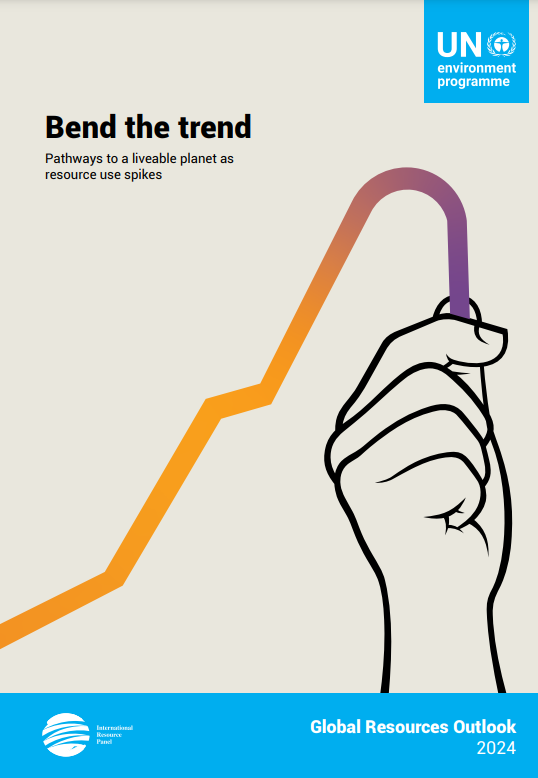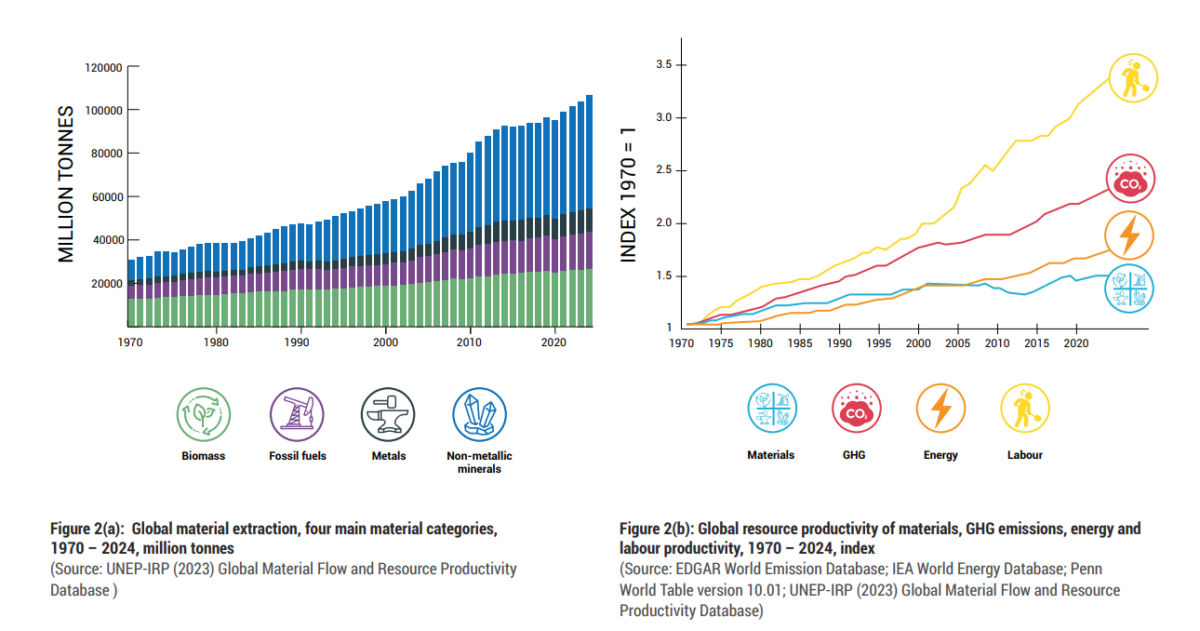Global Resources Outlook 2024
This 2024 edition of the Global Resources Outlook looks at global trends in resource consumption and outlines what is needed to tackle the triple planetary crisis through its multi-model scenario frameworks.


This report uses a multi-model scenario framework that, for the first time, projects the environmental impacts of resource use. The scenario links different, but complementary, models to represent interactions between human and environmental systems:
Based on this multi-model scenario framework, two possible trajectories are mapped out. The first continues along historical trends, and the second explores what could be achieved with ambitious and far-reaching actions to curb resource use and its impacts.
This report highlights how current trajectories of resource use impact non-state actors and local communities, and highlights the need to include these actors in policy making.
The report finds that increasing resource use is the main driver of the triple planetary crisis (climate change, pollution, biodiversity). The extraction and processing of material resources (fossil fuels, minerals, non-metallic minerals and biomass) account for over 55% of greenhouse gas emissions and 40% of particulate matter health related impacts.
Material use has increased more than three times over the last 50 years, mostly driven by the built environment and mobility systems, and continues to grow by an average of more than 2.3% per year. However, material use is not equal across the globe as high-income countries use six times more materials per capita and are responsible for ten times more climate impacts per capita than low-income countries. Overall, climate and biodiversity impacts from material extraction and processing are greatly exceeding targets based on staying within 1.5 degrees of climate change and avoiding biodiversity loss.
The report emphasises the need for urgent action based on decoupling to limit the environmental impacts of resource use while increasing well-being contributions from resource use. The prevailing approach which focuses on supply-side (production) measures must be supplemented with a much stronger focus on demand-side (consumption) measures, in order to address questions of global equity and sufficiency.
Based on scenario modelling, this report illustrates that it is possible to reduce resource use while growing the economy, reducing inequality, improving well-being and reducing environmental impacts. They emphasise the need for absolute reductions in high and upper-middle income nations. Urgent action is also needed to institutionalise resource governance including defining sustainable resource use paths on all governance levels, which may include developing multi-scale institutional arrangements. Finally, they call on leaders across all sectors, including governments at all levels, business and civil society, to act now.
